Abstract
The in vitro assay of inhibition of leucocyte migration was used in two forms for the study of the specificity of transplantation immunity in mice. In one system thymus cells (antigen) were mixed with peritoneal exudate cells (PEC) from mice immunized with skin grafts and inhibition of migration was detected only when the antigenic cells were of donor origin or were from a third-party strain which shared an H-2 region (K or D) with the graft donor. However, in another form of the assay, in which sensitized lymph node cells (LNC) were mixed with antigenic PEC, inhibition of migration was detected also using antigenic cells from third-party strains which did not share an H-2 region with the donor and possessed only few H-2 specificities of the donor. The inhibition of migration mediated by LNC was abrogated with the use of anti-Θ sera.
Transplantation immunity was studied in vivo with an assay of resistance to the growth of a third-party tumour (SaI) in mice pre-immunized with skin grafts from congenic strains having different H-2 antigens. Resistance was found in cases where the tumour cells did not share an H-2 region with the graft donor, but was weaker than the resistance obtained upon immunization with grafts from strains sharing an H-2 region with the tumour donor.
Full text
PDF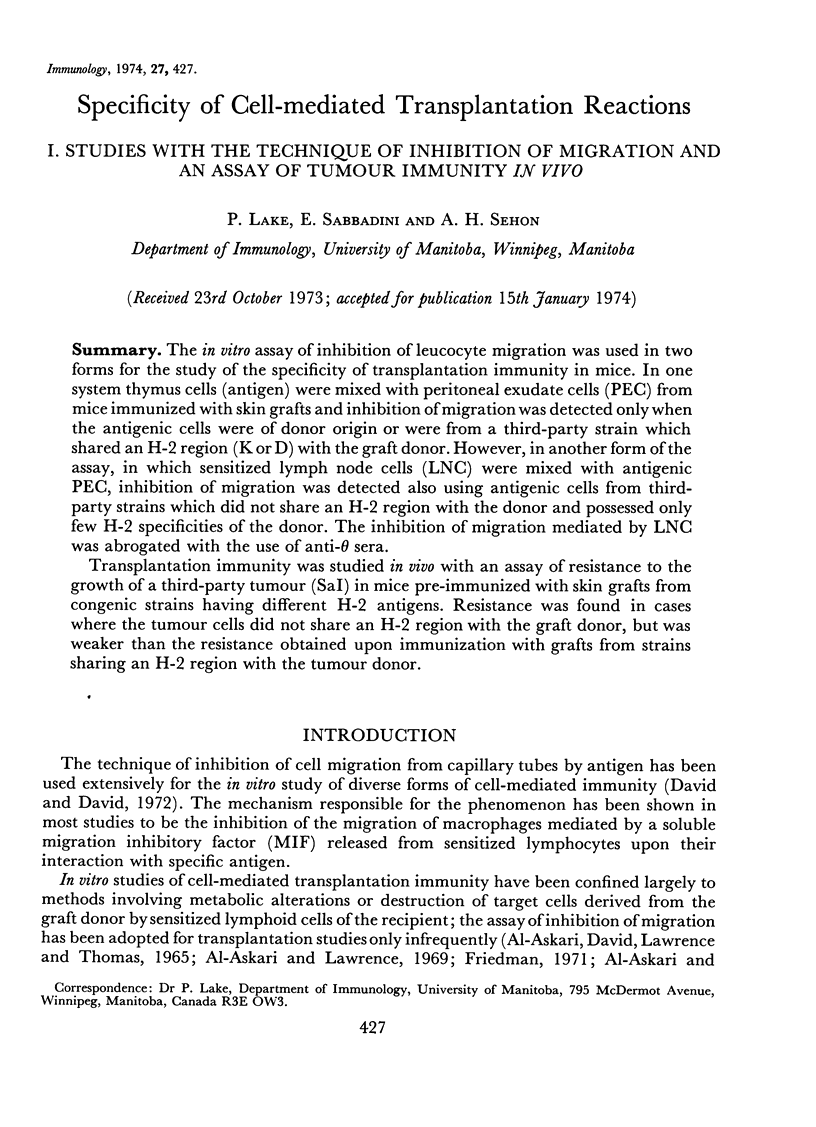
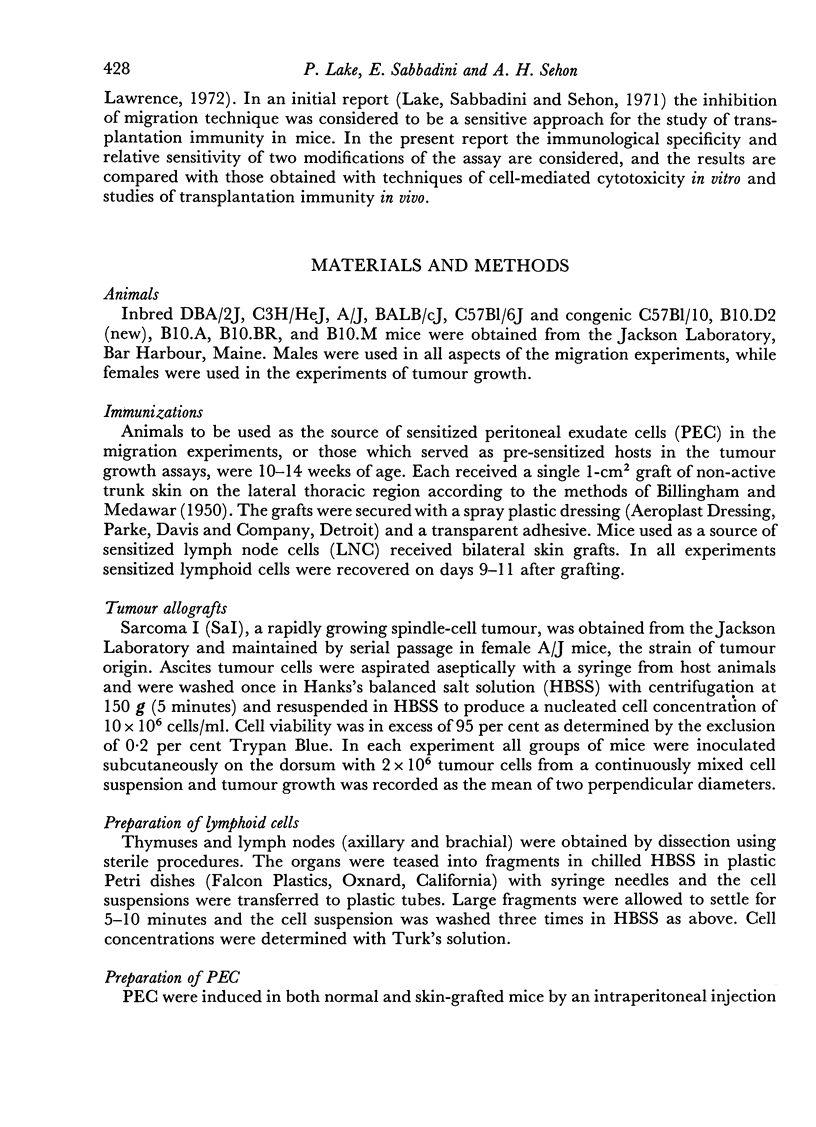
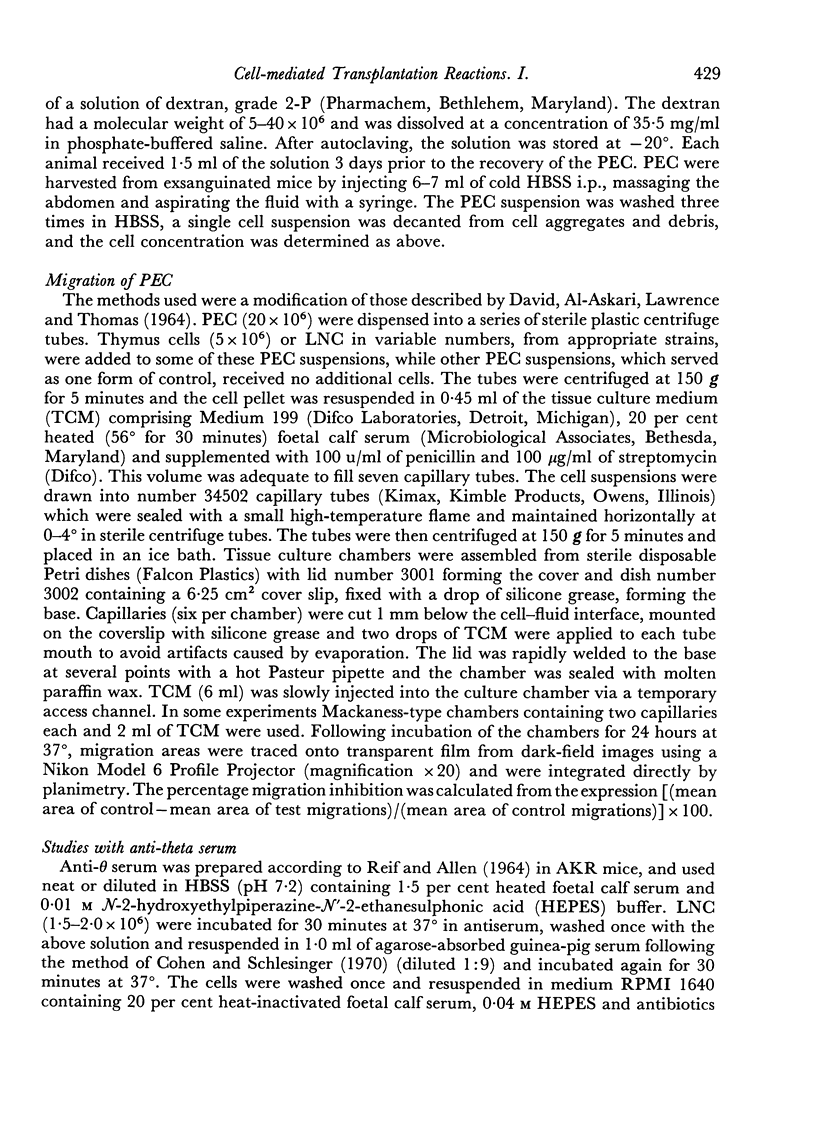

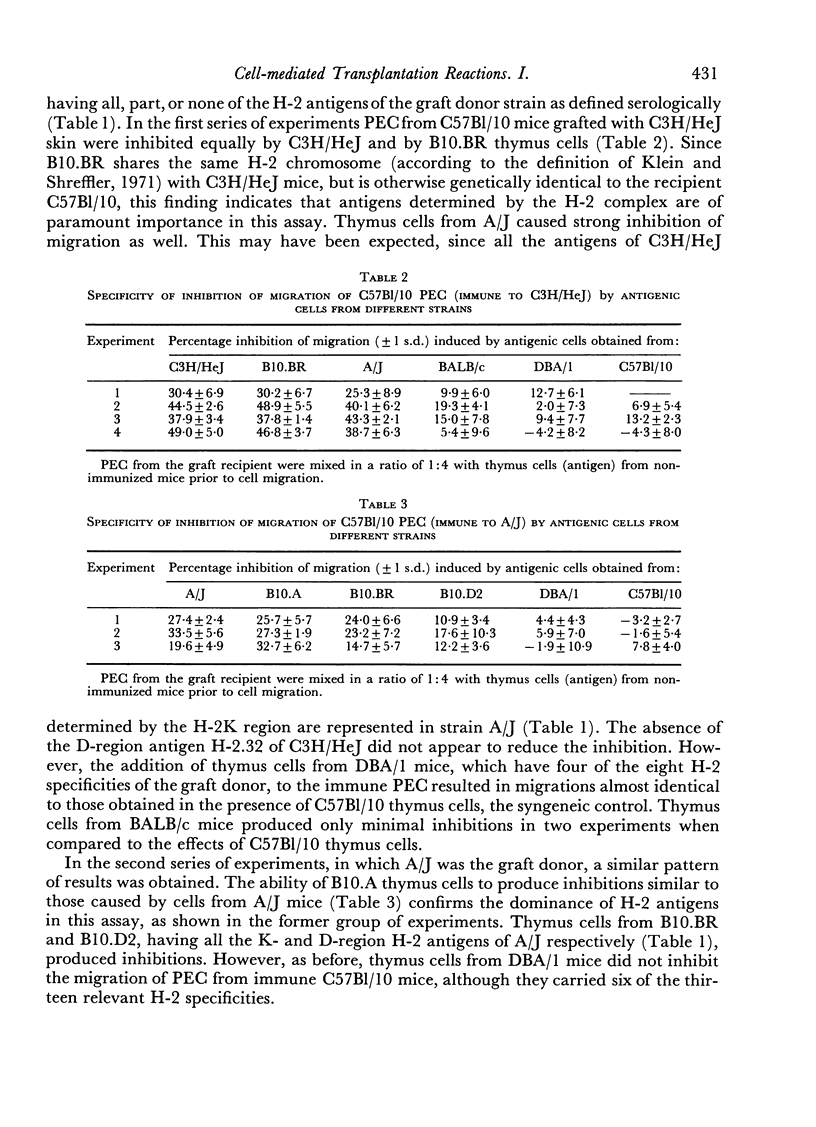
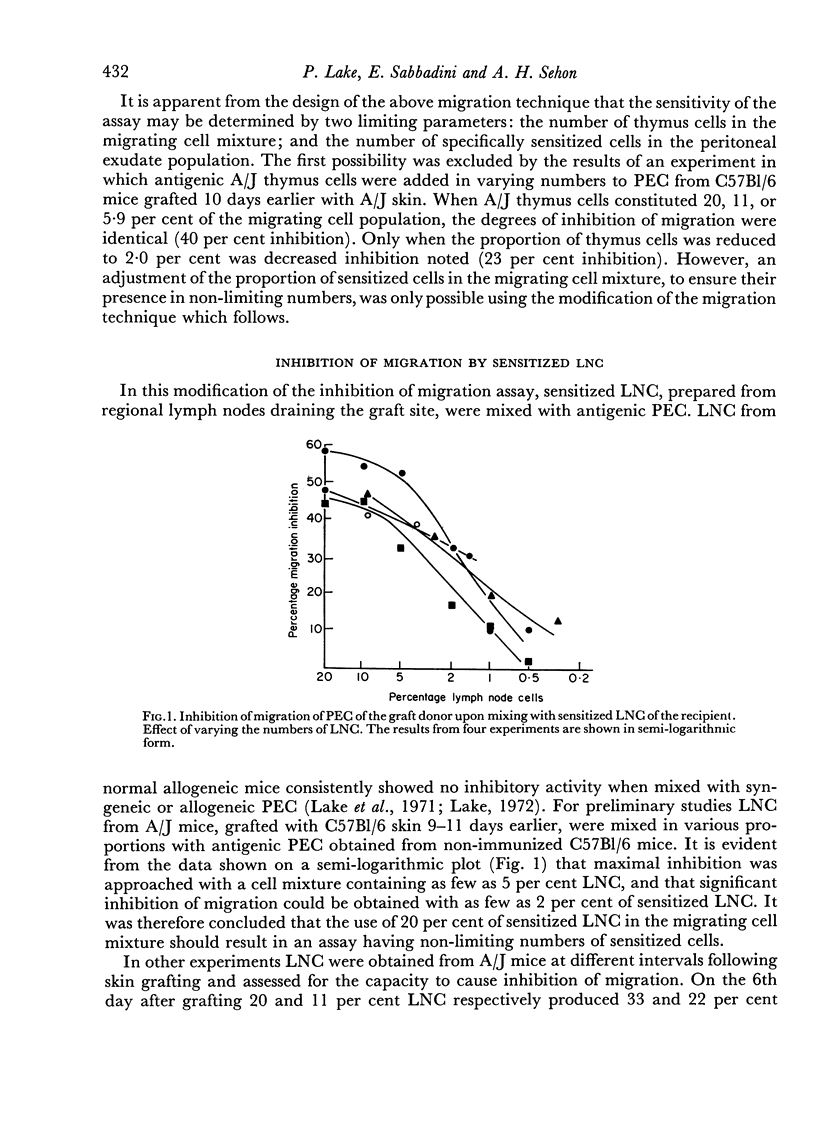
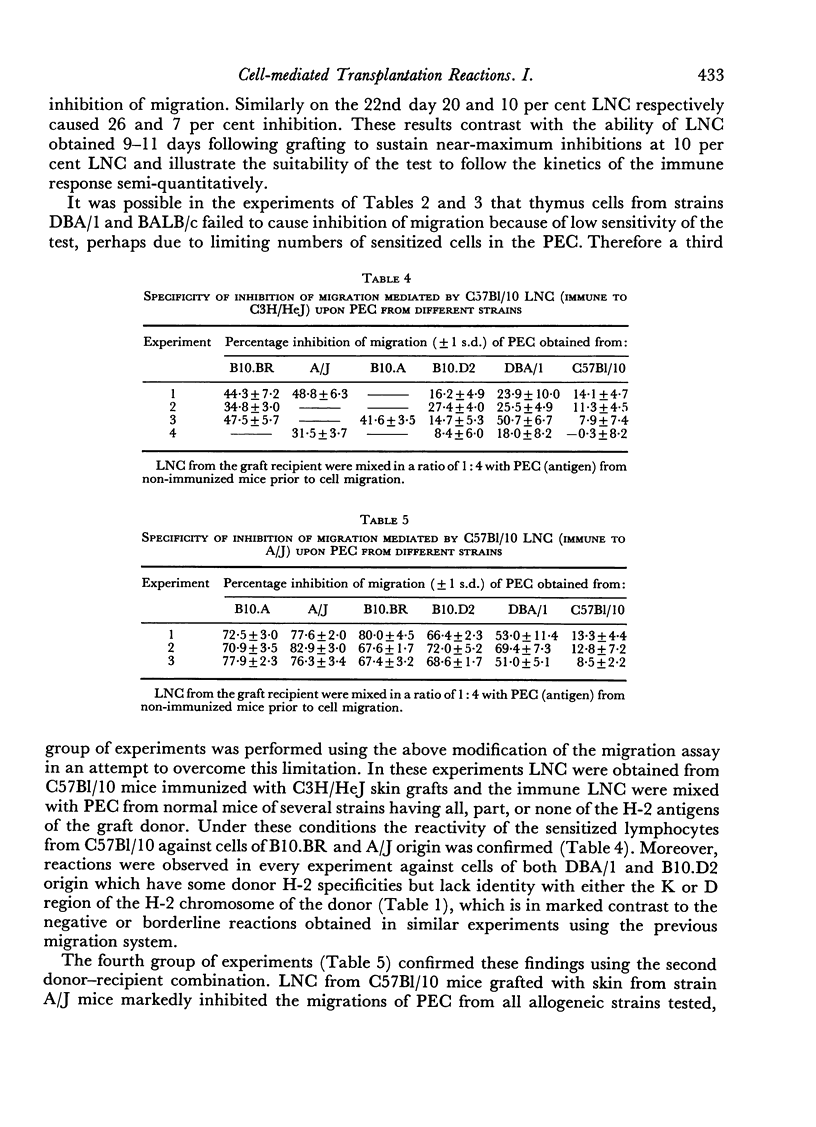
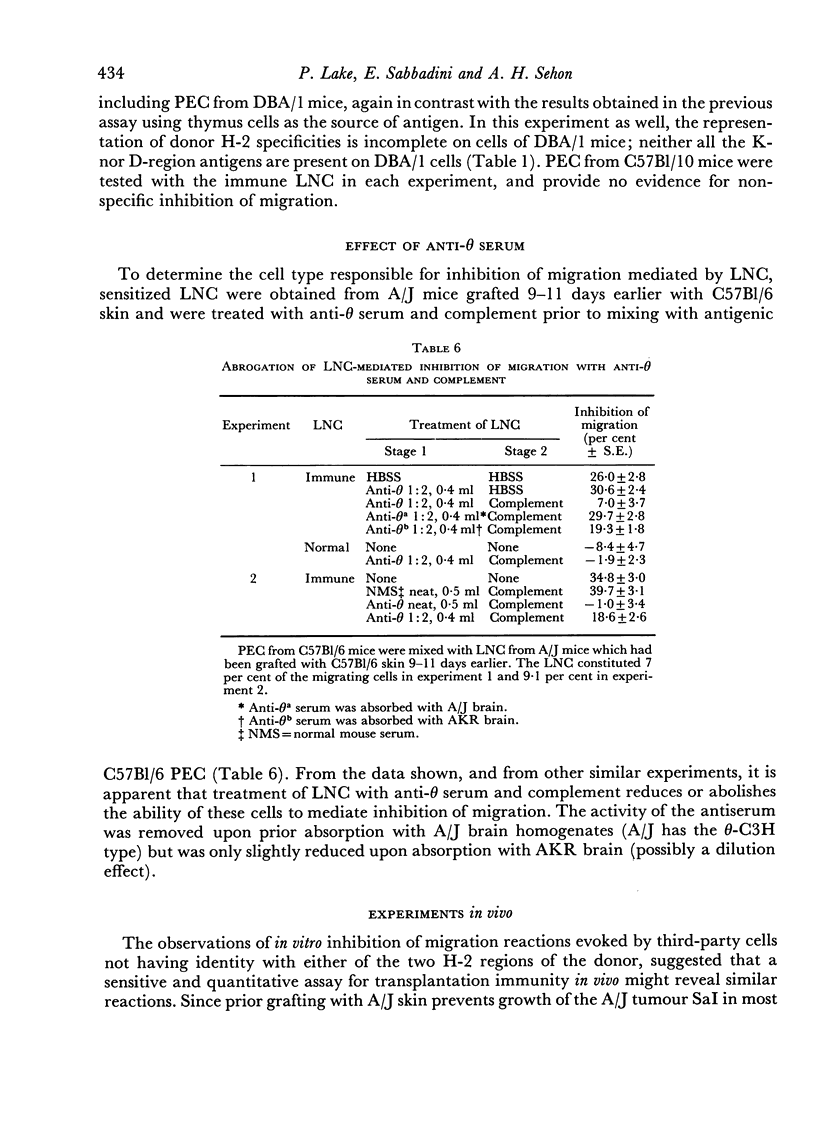
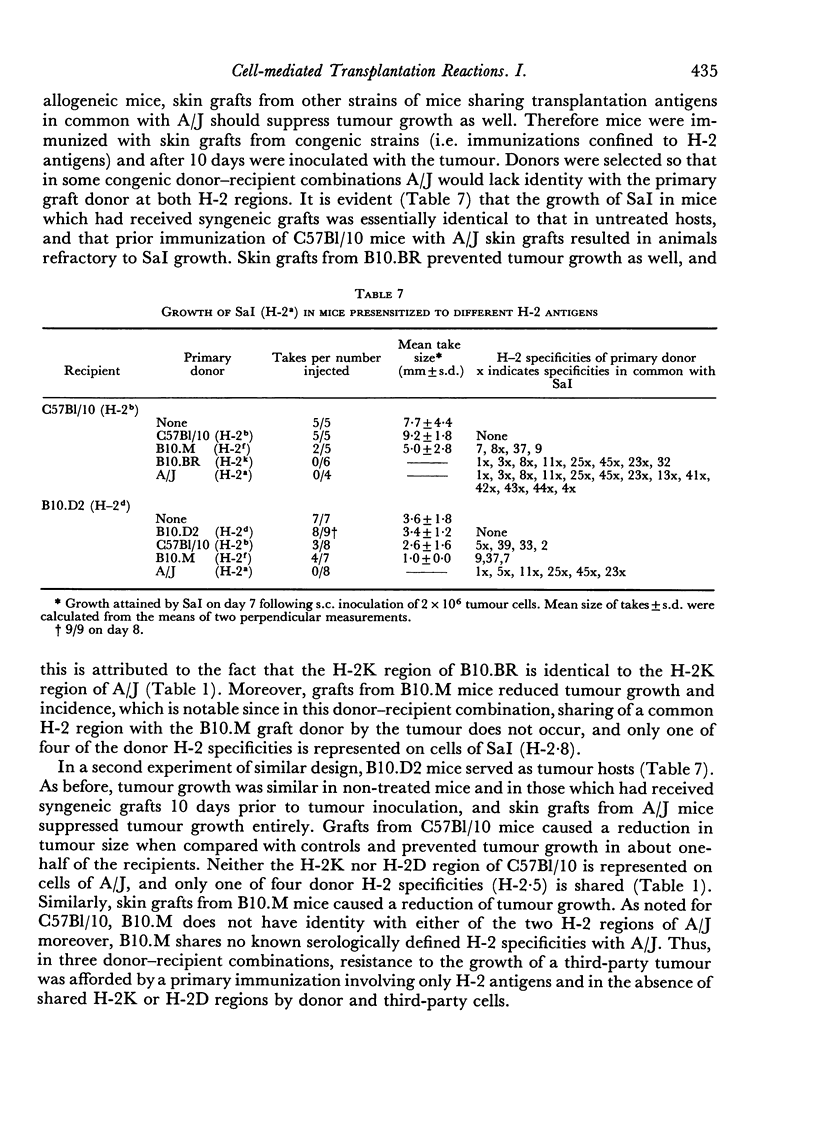

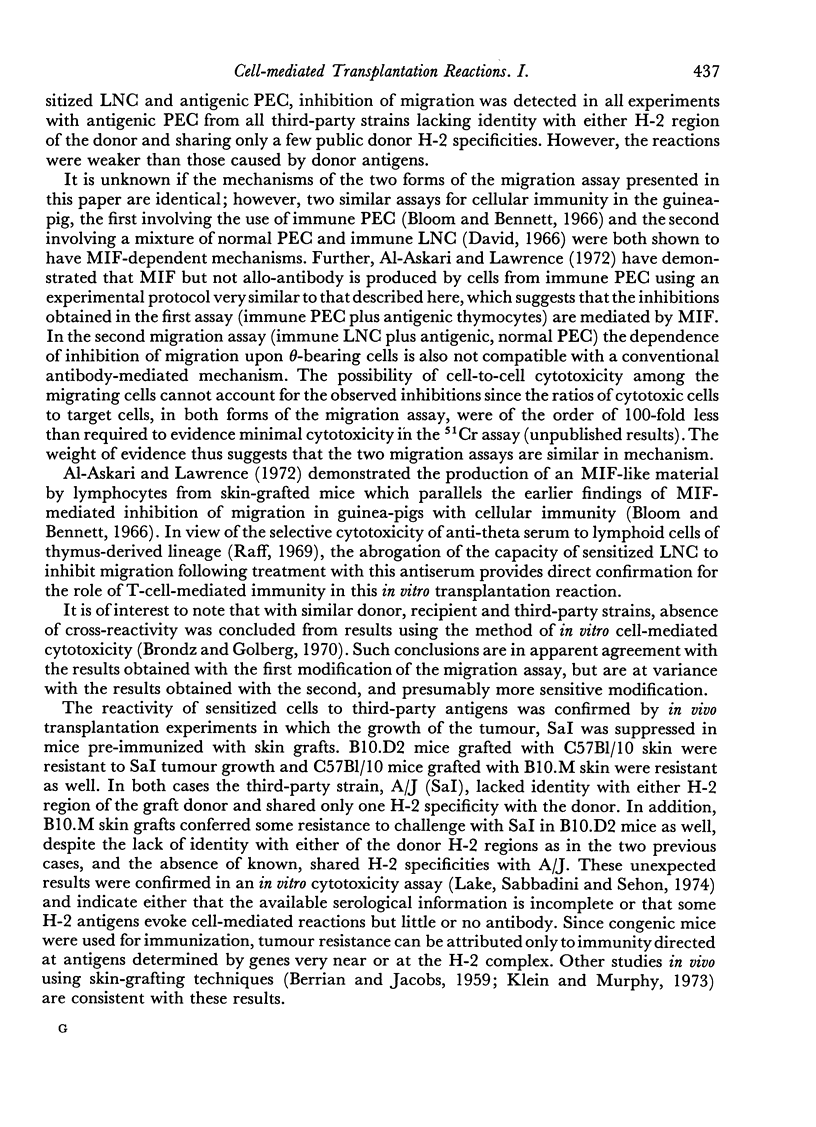
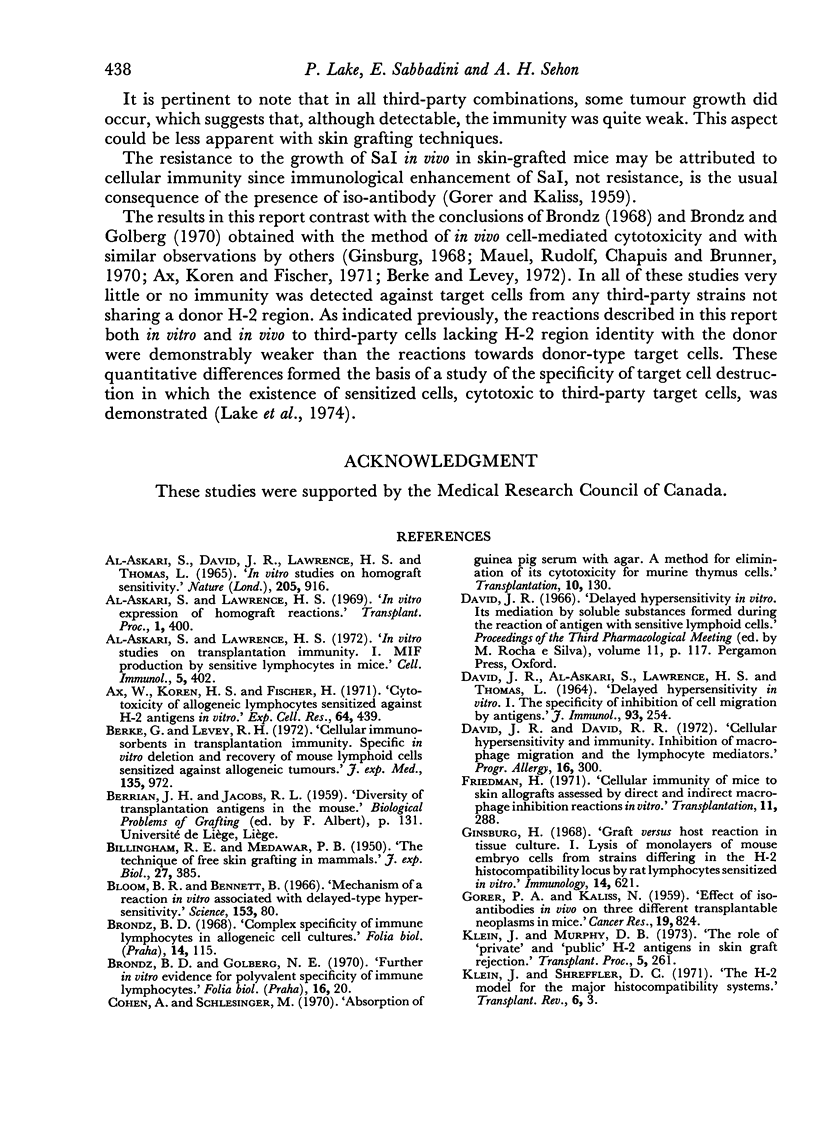
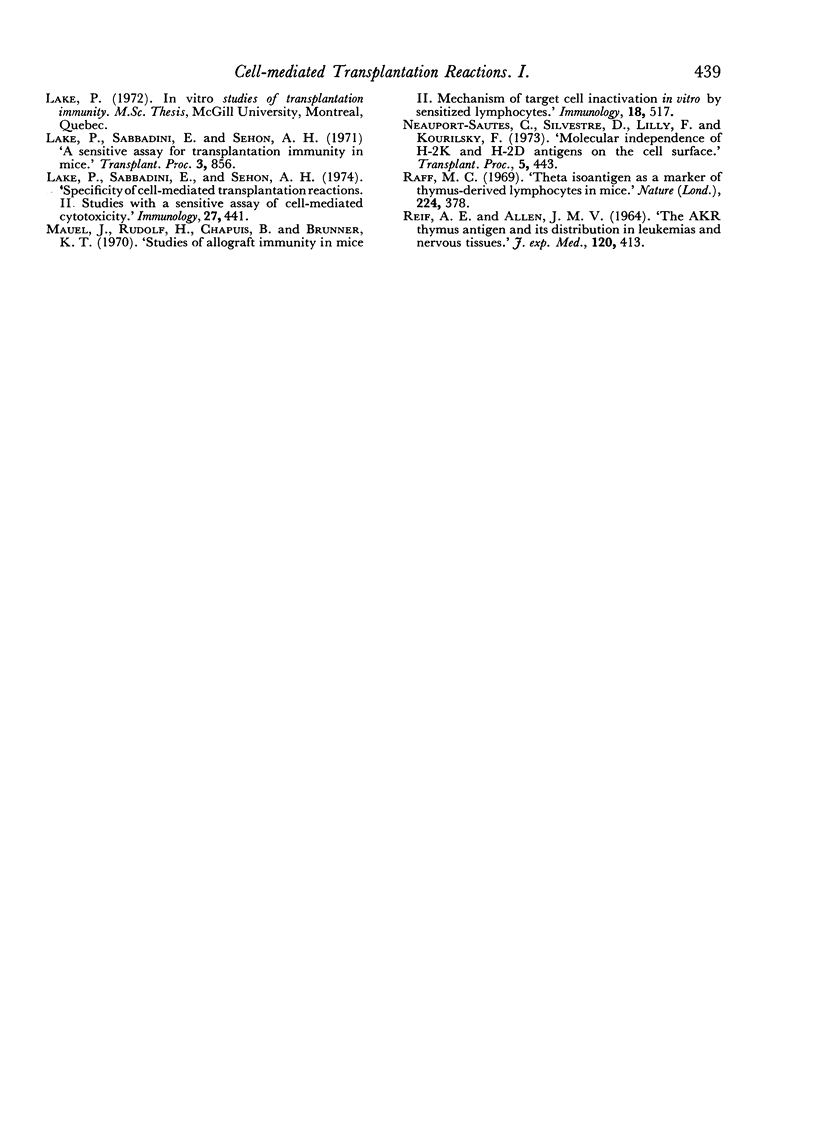
Selected References
These references are in PubMed. This may not be the complete list of references from this article.
- AL ASKARI S., DAVID J. R., LAWRENCE H. S., THOMAS L. IN VITRO STUDIES ON HOMOGRAFT SENSITIVITY. Nature. 1965 Feb 27;205:916–917. doi: 10.1038/205916a0. [DOI] [PubMed] [Google Scholar]
- Ax W., Koren H. S., Fischer H. Cytotoxicity of allogeneic lymphocytes sensitized against H-2 antigens in vitro. Exp Cell Res. 1971 Feb;64(2):439–449. doi: 10.1016/0014-4827(71)90098-x. [DOI] [PubMed] [Google Scholar]
- Berke G., Levey R. H. Cellular immunoabsorbents in transplantation immunity. Specific in vitro deletion and recovery of mouse lymphoid cells sensitized against allogeneic tumors. J Exp Med. 1972 Apr 1;135(4):972–984. doi: 10.1084/jem.135.4.972. [DOI] [PMC free article] [PubMed] [Google Scholar]
- Bloom B. R., Bennett B. Mechanism of a reaction in vitro associated with delayed-type hypersensitivity. Science. 1966 Jul 1;153(3731):80–82. doi: 10.1126/science.153.3731.80. [DOI] [PubMed] [Google Scholar]
- Brondz B. D. Complex specificity of immune lymphocytes in allogeneic cell cultures. Folia Biol (Praha) 1968;14(2):115–131. [PubMed] [Google Scholar]
- Brondz B. D., Golberg N. E. Further in vitro evidence for polyvalent specificity of immune lymphocytes. Folia Biol (Praha) 1970;16(1):20–28. [PubMed] [Google Scholar]
- Cohen A., Schlesinger M. Absorption of guinea pig serum with agar. A method for elimination of itscytotoxicity for murine thymus cells. Transplantation. 1970 Jul;10(1):130–132. doi: 10.1097/00007890-197007000-00027. [DOI] [PubMed] [Google Scholar]
- David J. R., David R. R. Cellular hypersensitivity and immunity. Inhibition of macrophage migration and the lymphocyte mediators. Prog Allergy. 1972;16:300–449. [PubMed] [Google Scholar]
- Friedman H. Cellular immunity of mice to skin allografts assessed by direct and indirect macrophage inhibition reactions in vitro. Transplantation. 1971 Mar;11(3):288–294. doi: 10.1097/00007890-197103000-00007. [DOI] [PubMed] [Google Scholar]
- GORER P. A., KALISS N. The effect of isoantibodies in vivo on three different transplantable neoplasms in mice. Cancer Res. 1959 Sep;19:824–830. [PubMed] [Google Scholar]
- Klein J., Murphy D. B. The role of "private" and "public" H-2 antigens in skin graft rejection. Transplant Proc. 1973 Mar;5(1):261–265. [PubMed] [Google Scholar]
- Klein J., Shreffler D. C. The H-2 model for the major histocompatibility systems. Transplant Rev. 1971;6:3–29. doi: 10.1111/j.1600-065x.1971.tb00457.x. [DOI] [PubMed] [Google Scholar]
- Lake P., Sabbadini E., Sehon A. H. A sensitive assay for transplantation immunity in mice. Transplant Proc. 1971 Mar;3(1):856–859. [PubMed] [Google Scholar]
- Lake P., Sabbadini E., Sehon A. H. Specificity of cell-mediated transplantation reactions. II. Studies with a sensitive assay of cell-mediated cytotoxicity. Immunology. 1974 Sep;27(3):441–455. [PMC free article] [PubMed] [Google Scholar]
- Lawrence H. S., al-Askari S. In vitro expression of homograft reactions. Transplant Proc. 1969 Mar;1(1):400–402. [PubMed] [Google Scholar]
- Mauel J., Rudolf H., Chapuis B., Brunner K. T. Studies of allograft immunity in mice. II. Mechanism of target cell inactivation in vitro by sensitized lymphocytes. Immunology. 1970 Apr;18(4):517–535. [PMC free article] [PubMed] [Google Scholar]
- Neauport-Sautes C., Silvestre D., Lilly F., Kourilsky F. M. Molecular independence of H-2K and H-2D antigens on the cell surface. Transplant Proc. 1973 Mar;5(1):443–446. [PubMed] [Google Scholar]
- REIF A. E., ALLEN J. M. THE AKR THYMIC ANTIGEN AND ITS DISTRIBUTION IN LEUKEMIAS AND NERVOUS TISSUES. J Exp Med. 1964 Sep 1;120:413–433. doi: 10.1084/jem.120.3.413. [DOI] [PMC free article] [PubMed] [Google Scholar]
- Raff M. Theta isoantigen as a marker of thymus-derived lymphocytes in mice. Nature. 1969 Oct 25;224(5217):378–379. doi: 10.1038/224378a0. [DOI] [PubMed] [Google Scholar]
- al-Askari S., Lawrence H. S. In vitro studies on transplantation immunity. I. MIF production by sensitive lymphocytes in mice. Cell Immunol. 1972 Nov;5(3):402–409. doi: 10.1016/0008-8749(72)90066-4. [DOI] [PubMed] [Google Scholar]


